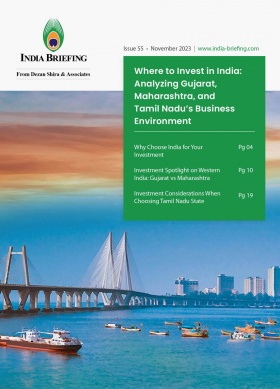India’s ITR Forms for AY 2024–25: Key Updates
India’s Income Tax Department had released offline Excel and JSON format versions of the ITR Forms for FY 2023–24 (AY 2024–25) in February itself. From April 1, e-filing mechanisms have been activated for ITR-1, ITR-2, and ITR-4 for FY 2023-24 (AY 2024-25). The last date for filing income tax returns for FY 24/AY25 is July 31, 2024, unless stipulated otherwise.
In ITR-1 and ITR-4, taxpayers can indicate their tax regime choice and file Form 10-IEA to opt out of the new tax regime. Among the changes rolled out this year, the IT department requires the Legal Entity Identifier (LEI), Audit Report acknowledgment numbers, Unique Document Identification Number (UDIN), disclosures for cash receipts, and more in the relevant forms.
The Income Tax Department of India has announced the Income Tax Return (ITR) Forms 1-6 for the Financial Year 2023–24 (Assessment Year 2024–25). The new forms were released in early February by the Central Board of Direct Taxes (CBDT) to help taxpayers and streamline the filing procedure. Filing all ITR Forms 1 to 6 will be effective from April 1, 2024.
Also, from April 1, e-filing for some of the forms – ITR-1, 2, and 4 – was enabled by the Income Tax Department.
The new changes introduced in AY 2024-25 ITR forms follow primarily from the amendments made to the Income-tax Act, 1961, as outlined in the Finance Act, 2023. For example, a new provision under Section 43B inserted into the Income-tax Act prohibits deductions for any amounts payable to micro or small businesses that are not paid within the MSME Act’s set time limit in order to guarantee timely payments to MSMEs.
The deadlines for filing ITR-2 and ITR-3 are set for July 31, 2024. However, individuals subject to income tax audits and those with business income are required to submit ITR-3 by October 31, 2024.
The Income Tax Department has seven distinct forms for return filing, namely ITR-1, ITR-2, ITR-3, ITR-4, ITR-5, ITR-6, and ITR-7.
Within two income tax return forms, namely ITR-1 (SAHAJ) and ITR-4 (SUGAM), for the AY 2024–25, a filing deadline is set for July 31, 2024, unless an extension is granted. The notification for ITR-1 and ITR-4 for FY 2024–25 was issued on December 22, 2023.
Significant changes include the requirement for taxpayers to disclose all their bank accounts from the previous year, specifying the type of account. The default tax regime has shifted to the new regime, and individuals must provide details if they choose to opt out and switch to the old income tax regime. In ITR-1, taxpayers are required to select the tax regime, while in ITR-4, the submission of Form 10-IEA is necessary to opt out of the new tax regime. Additionally, a new column for claiming deductions under Section 80CCH has been introduced in both forms. ITR-4 introduces a ‘Receipts in Cash’ column, accommodating an increased turnover limit.
The new ITR forms for AY 2024–25 seek additional information to improve transparency and align with amendments in the Finance Act, 2023. Changes include the introduction of Legal Entity Identifier (LEI) details, acknowledgment numbers for the Audit Report, Unique Document Identification Number (UDIN) details, and disclosures related to cash receipts, the MSME Act, 2006, and winnings from online games.
Introducing India’s income tax forms ITR-1 to ITR-7
ITR-1 (SAHAJ) is designed for individuals with simple income structures and excludes those with income from business or profession, capital gains, or those claiming double taxation relief. Eligibility criteria include being a resident individual, having a total income up to INR 5 million, agriculture income up to INR 5000, and owning only one house property.
|
Key Differences Between ITR-1 and ITR-2
|
||
|
Criteria |
ITR- 1 |
ITR-2 |
|
Applicant type |
Individuals (resident or non-resident) |
Individuals (resident or non-resident) and Hindu Undivided Families (HUFs) |
|
Individual income from salary/pension within a FY |
Up to INR 5 million |
More than INR 5 million |
|
Income from other sources |
Excluding activities like horse racing, gambling, lotteries, etc. |
Including activities like lotteries, gambling, horse racing, card games, etc. |
|
Exempt income |
Up to INR 5000 |
More than INR 5000 |
|
Income from property |
Up to 1 house |
More than 1 house |
ITR-2 forms must be filed by those individuals or Hindu Undivided Families (HUFs) who are not eligible for ITR-1. The criteria include those who do not have income from a business or profession, do not receive income from a partnership firm in the form of interest, salary, bonus, commission, or remuneration, or who have the income of another person to be clubbed. Additional details in ITR-2 include LEI details, contributions to political parties, and deductions for the maintenance of a dependent with a disability.
IT-3 is meant for individuals with business or professional income. ITR-3 is mandatory for individuals whose income is taxable under the “profits and gains of business or profession,” including interest, salary, bonus, commission, or remuneration.
In financial year 2022–23, certain revisions were made to the ITR-3 form, which will be applicable for FY2024/AY2025:
- Schedule VDAs (voluntary disclosure agreements) have been newly introduced to separately detail income from crypto/other VDAs.
- If VDA income is treated as capital gains, a quarterly breakdown is required in the Capital Gains Schedule. The revised ITR-3 mandates reporting every VDA transaction, including sale and purchase dates.
- Foreign institutional investors (FII/FPI) are now obligated to disclose their SEBI registration number for enhanced transparency.
- The balance sheet reporting has undergone a minor modification, specifying that advances received per section 40A(2)(b) of the Income Tax Act from specified individuals and others should be reported under the ‘Advances’ category in Source of Funds.
- The newly introduced ‘Trading Account’ section necessitates the reporting of turnover and income from intraday trading.
ITR-4 (SUGAM) is designed for resident individuals, HUFs, and firms (excluding LLP) with a total income up to INR 5 million and business or profession income computed under sections 44AD, 44ADA, or 44AE of the Income-tax Act. Notably, a new field for reporting ‘receipts in cash’ has been included in Schedule ‘BP—details of income from business or profession’ for those to whom the form applies.
This plan is also available to freelancers who receive income under sections 44AD, 44AE, or ADA, but only if their gross earnings do not exceed INR 5 million. In order to choose the presumptive taxation scheme under section 44AD, the turnover threshold limit was raised from INR 20 million to INR 3 million by the Finance Act, 2023, provided that the cash receipts do not exceed five percent of the entire turnover or gross receipts for the previous year.
The ITR-5 form is meant for a particular class of taxpayers, namely, Association of Persons (AOPs), LLPs, firms, Body of Individuals (BOIs), Estate of deceased, Artificial Juridical Person (AJP), Business Trust, Estate of Insolvent, and Investment Funds. Individuals, corporations, HUFs, and those who file an income tax return using the new ITR Form 7 do not file the ITR-5 Form. The ITR-5 form is also not available to anyone filing an income tax return under sections 139(4A), 139(4B), 139(4C), or 139(4D) (i.e. trusts, political parties, institutions, colleges, etc.).
ITR-6 is for companies that are registered under the Indian Companies Act of 1956 or any other law, even if they are not claiming exemption u/s 11 (income from property held for charitable or religious purposes).
ITR-7 is for charitable/religious trusts, political parties, scientific research institutions, and university/colleges/institutions/Khadi and village industries requiring exemptions under various sections. Electronic filing is mandated for specific sections.
Some tax experts in India believe that the new tax regime becoming the default option simplifies tax return filing, with the option to opt out for those preferring the old regime. The updated forms aim to streamline the process and enable faster refunds.
(This article was originally published February 13, 2024. It was last updated April 3, 2024.)
About Us
India Briefing is one of five regional publications under the Asia Briefing brand. It is supported by Dezan Shira & Associates, a pan-Asia, multi-disciplinary professional services firm that assists foreign investors throughout Asia, including through offices in Delhi, Mumbai, and Bengaluru in India. Readers may write to india@dezshira.com for support on doing business in India. For a complimentary subscription to India Briefing’s content products, please click here.
Dezan Shira & Associates also maintains offices or has alliance partners assisting foreign investors in China, Hong Kong SAR, Dubai (UAE), Indonesia, Singapore, Vietnam, Philippines, Malaysia, Thailand, Bangladesh, Italy, Germany, the United States, and Australia.
- Previous Article India-Spain DTAA Notification: Lowered Tax Rates and Key Provisions
- Next Article Investing in Assam State, India








